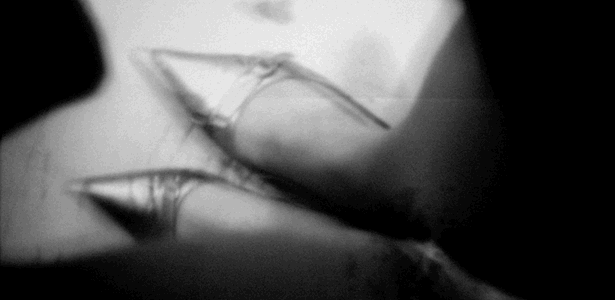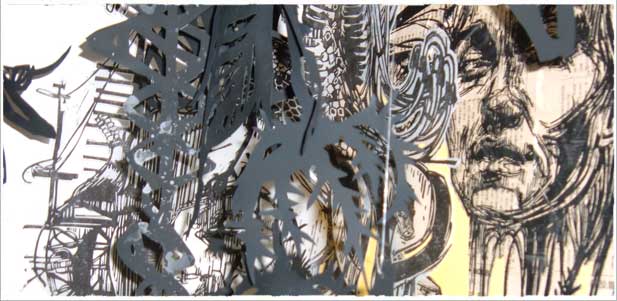
by Marisa E. Plumb
The city of Chicago has good news for all of its aspiring actors. It’s likely the easiest place in the nation to be captured on film.
As with many films, the bit parts for citizens abound, but by contrast, the starring roles are not desirable. This is because the continuous footage that captures Chicagoans–some hundreds of times a day–is a security device used to trap criminals and foresee threats to public safety. It is produced by the city of Chicago and funded with the help of a $5.1 million federal homeland security grant.
What began in 2003 as a pilot program coined “Opera-tion Disruption,” linking 30 surveillance cameras along the city’s West Side, essentially served to signal to criminals that someone was watching the streets. This original program has seen such accelerated growth in the last two years that it is now the largest video surveillance network in the nation.
Chicago’s video surveillance technology is constituted by over 2000 cameras, which monitor the city’s transit system, public housing, and public buildings. Two hundred fifty high-tech cameras, with the ability to recognize sounds such as gunshots, were added to the network last fall.
City officials cite the cameras as indispensable tools that facilitate their efforts to stifle and prevent all manner of criminal violations, ultimately making the city more prepared to respond to emergencies.
The network’s home base is Chicago’s Office of Emergency Management—a 161,000-square-foot, state-of-the-art facility on the West Side—where the surveillance video footage is streamed.
This 911 emergency center is a pioneer in its initiative to link thousands of security cameras throughout the city. With their sophisticated computer programs, the cameras can detect a wide range of suspicious public behavior. Police are able to receive alerts when an individual walks in aimless circles, lingers outside a potential terrorist target, pulls over on the highway, or abandons a package in a busy area. The technology highlights images of suspects in color, and police are then dispatched to the scene.
By no grand leap of logic, one recognizes that this kind of awareness took on greater importance after the 9/11 terrorist attacks in New York. As the Sears Tower was a potential target on that day, the impetus behind Chicago’s surveillance methodologies is in part to prevent large-scale threats to homeland security.
The system was designed after studying similar ones in London, which developed its world-class surveillance technology in response to Irish terrorists. Las Vegas casino security and systems used by U.S. Army combat units were also examined.
Accordingly, the watchful eye on Chicagoans is not in place solely to gauge varying levels of terrorist threats. City officials are quick to cite the system’s active role in reducing the incidence of crimes in neighborhoods, pointing to statistics of reduced drug offenses and violent crimes. When an emergency call is received, dispatchers can immediately locate a nearest camera and utilize its ability to zoom in and rotate around a subject.
As one might imagine, the startling and diverse capabilities of this citywide video surveillance network have ignited a chorus of public concern and privacy debates; taken together they are a prominent current beneath the city’s press releases, technology, and spending. The School of the Art Institute of Chicago’s staff and students have played an active role in the issues and initiatives that surveillance video has raised.
Privacy issues have a long history of aggravating tensions between citizens and the state, but recent world events and advances in technology have complicated what this debate means to people on a daily basis.
Art and Technology Professor Tiffany Holmes teaches a class—Art of Surveillance—that examines the implications of video surveillance on our culture and our concept of private and public space.
She said, “As an instructor, I try to plan events and screen artworks that offer a variety of perspectives on surveillance systems. For example, guest lecturers have included Alex Shlepakov, CEO of Digitek Security, and Daniel Rothenburg, a specialist in international peace tribunals and migrant labor in the U.S.A.”
Bill Brown of the Surveillance Camera Play-ers took a group of people attending VersionFest at the Museum of Contemporary Art on a walking tour of surveillance cameras in the Loop. Holmes’ class of 2004 decided to create a website “detailing the location of all the surveillance cameras in the Loop.” She said, “The collective’s mission was not to create art. Rather, we wanted to raise citizen awareness about the number of cameras in public space.”
Found at www.open-loop.org, the site offers a map of private, traffic police, city, and government cameras as they are installed in Chicago’s downtown area. In addition, the site invokes a discussion of what such comprehensive public surveillance means to a democratic society.
One page of the site, titled “Our History: The Birth of Surveillance Society,” opens with the statement, “In a democratic society, the degree of social and legal control available to the government should be determined by the willingness of its citizens to submit to institutional regulation.”
It goes on to trace the concept of privacy rights from America’s earliest years to the present, acknowledging the political and social contexts that shaped it. In the 17th century, when a more Puritanical attitude deemed that secrecy was a threat, even synonymous with sin, spying became a “civic obligation.” Thus, surveillance was a mutual activity. In present times, the dynamic of privacy and surveillance has changed. The public seems willing to forego a severe degree of privacy “in exchange for the perception of safety.”
Many students in Holmes’ class went on to do other work inspired by the topic of video surveillance. SAIC graduate student Lacie Garnes conducted independent research while taking Holmes’ course. While topics in surveillance were new to her, she had a previous interest in voyeurism and so found an interesting overlap in “voyeurism legislation.” Laws that regulate what is legal in voyeuristic situations, she said, are not keeping up with technology.
Garnes found one particular set of incidences, known as “Upskirt,” where people were hiding cameras in bags and positioning them to capture images under women’s skirts, basically using spy technology to exploitative ends and violating the privacy of unsuspecting women on escalators or standing in lines. The captured footage was commonly posted on Internet sites.
Garnes said that the problem right now is that, “The law doesn’t protect the women. It’s a matter of what constitutes public and private space. The women are still considered to be in public space.” Similarly, the surveillance cameras throughout the city can focus on any subject so long as they are in public
“This was the appalling thing that led me to make my project,” she said
To turn the tables, so to speak, Garnes positioned a camera under her own skirt and “looked out into the world.”
Much like the footage streamed to Chicago’s 911 call center, Garnes’ was largely mundane. But she said that despite this, some people did look obsessively. They were not deterred from what they might normally do because the camera was hidden. Public surveillance on the other hand, hopes to intersect with and prevent peoples’ harmful actions. After the terrorist attacks on London’s transit system on July 7, many news analysts looked at the effectiveness of video surveillance from both sides. It’s possible to say that the advanced camera technology in London’s transit system was a crucial tool in identifying and trapping the terrorist bombers. But it was also acknowledged that the existence of the cameras did nothing to stop the actions of determined individuals.
On this point, Garnes concurs. She said, “Cameras are positioned in the public domain for sense of protection. But things still happen. Cameras don’t jump off of the buildings.”
Video still from “Outskirt” by Lacie Garnes
September 2005






